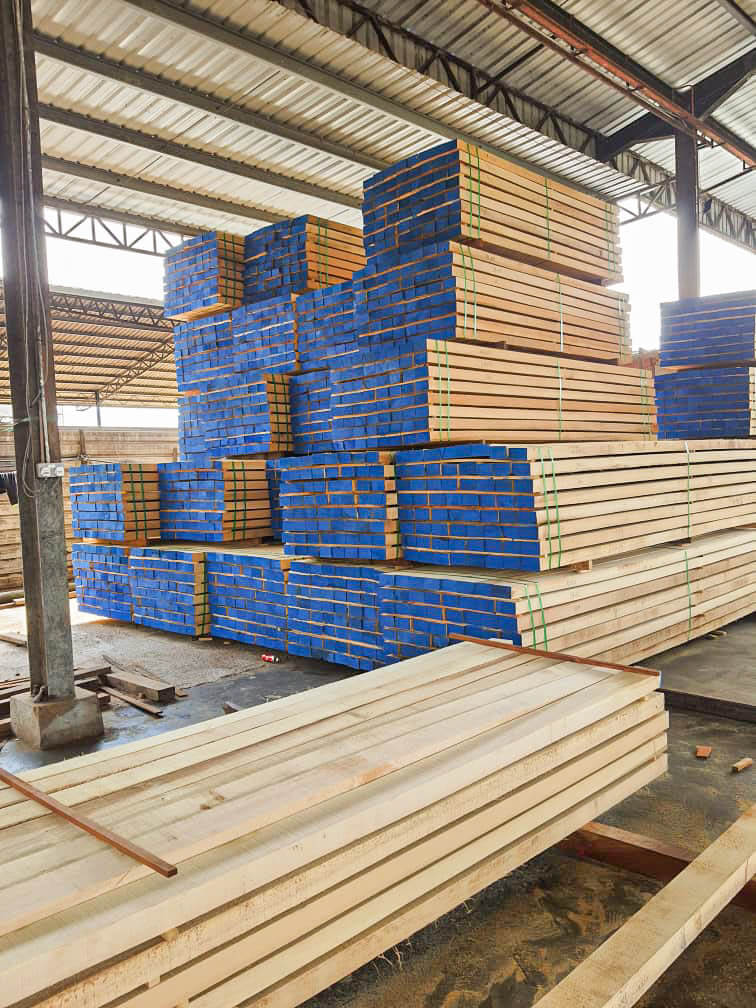Type of Sawn Timber (Mersawa)



The Standard Malaysian Name for the timber of Anisoptera spp. (Dipterocarpaceae). The common vernacular names applied include kijal (Terengganu), loh (Pahang), medang sawa (Peninsular Malaysia), mersawa (Peninsular Malaysia and Sarawak) with various epithets, pengiran (Sabah) with various epithets, rengkong (Pahang), sanai (Peninsular Malaysia), sepah petri (Negeri Sembilan) and terbak (Kedah, Perlis and Kelantan). Major species include A. costata, A. curtisii, A. grossivenia, A. laevis, A. marginata, A. megistocarpa and A. scaphula. The sapwood is not sharply defined from the heartwood, which is light to dark yellow and darkens on exposure.


The Standard Malaysian Name for the timber of Anisoptera spp. (Dipterocarpaceae). The common vernacular names applied include kijal (Terengganu), loh (Pahang), medang sawa (Peninsular Malaysia), mersawa (Peninsular Malaysia and Sarawak) with various epithets, pengiran (Sabah) with various epithets, rengkong (Pahang), sanai (Peninsular Malaysia), sepah petri (Negeri Sembilan) and terbak (Kedah, Perlis and Kelantan). Major species include A. costata, A. curtisii, A. grossivenia, A. laevis, A. marginata, A. megistocarpa and A. scaphula. The sapwood is not sharply defined from the heartwood, which is light to dark yellow and darkens on exposure.
Charactieristic of sawn timber (Mersawa)

- DENSITY : Light Hardwood with a density of 515-735 kg/m3 air dry.
- NATURAL DURABILITY : Untreated specimens of A. marginata planted at the test site at the Forest Research Institute Malaysia (FRIM). The timber lasted only 5 years and classified as moderately durable under exposed conditions. It is very susceptible to fungal attacks. When treated with diesel/fuel mixture and planted at the test site at FRIM in 1979. After two years, all the specimens are still sound
- PRESERVATIVE TREATMENT :The timber is classified as difficult to treat with preservatives.
- TEXTURE : Texture is moderately coarse but even, with shallow to deeply interlocked and sometimes slightly spiral grain.
- AIR DRING : The timber dries very slowly but with only slight degrades. Minor cupping, bowing and surface-checking are noted during drying.
Additional Info woods
- STRENGTH PROPERTIES : The timber falls into Strength Group C (Engku, 1988b) or SG 6 (MS 544:Part 2:2001).

- MACHINING PROPERTIES: It is difficult to resaw and cross-cut and have a dulling effect on the cutters, due to the presence of silica. The timber is difficult to plane but the surface produced is smooth.
- NAILING PROPERTY : Good
- SHRINKAGE :Shrinkage is high, radial shrinkage averaging 1.4% and tangential shrinkage averaging 3.5%.
- DEFECTS :Free from defects although some spongy heart is present in some logs and liable to be attacked by ambrosia beetles if the logs are left lying in the forest after felling and such attack has been known to extend to the heartwood.
- USES : Extremely popular as a plywood species. Other uses include light construction, door and window frames and sills (internal use only), posts, beams, joists, rafters, furniture, pallets (expendable type), packing boxes and crates, joinery, cabinet making, flooring, staircase (newel, sprandrel framing, tread, bullnose, round end and winder), tool handles (non-impact) and disposable chopsticks.
Other type of sawn timber
Collaboration





